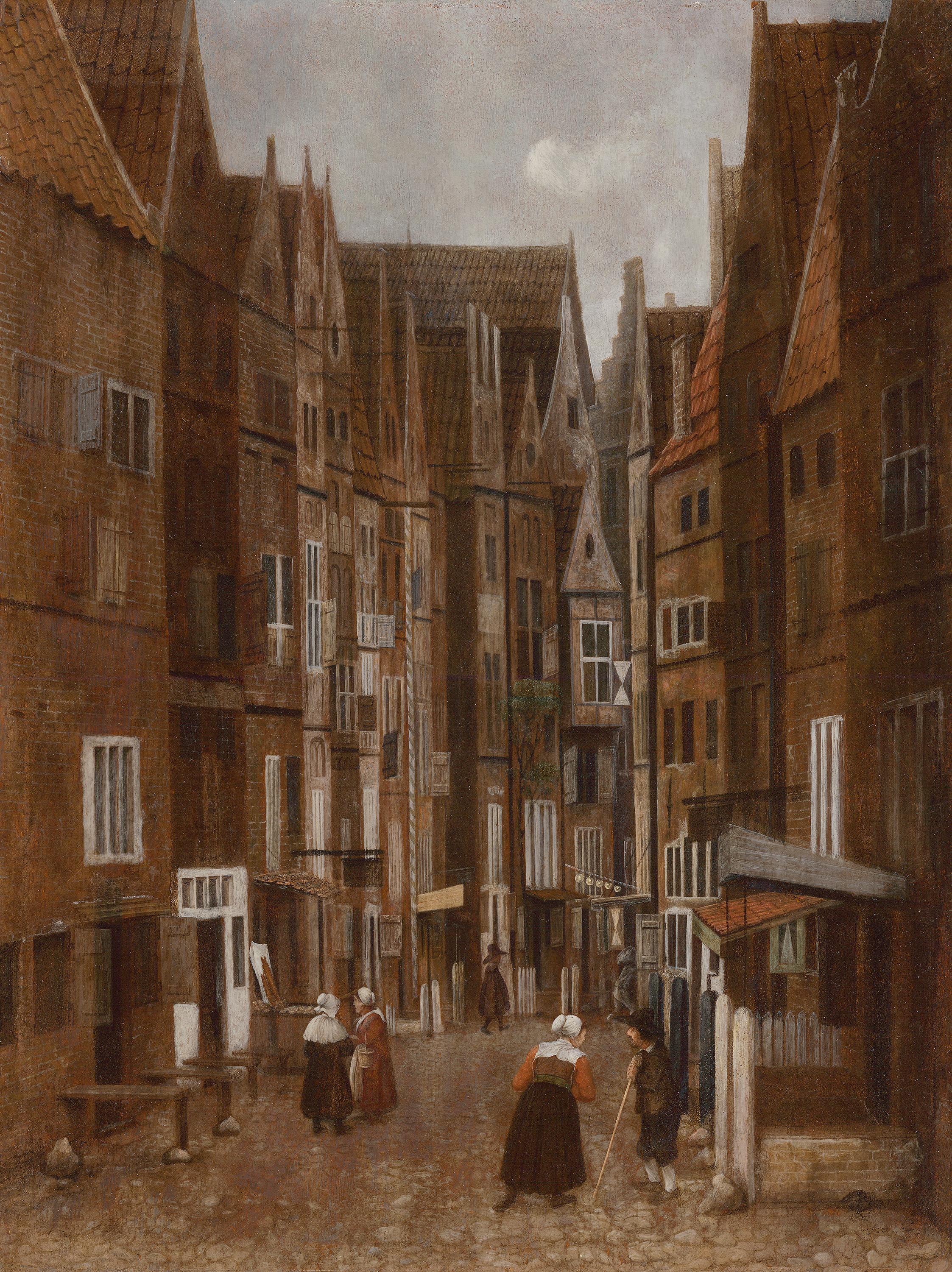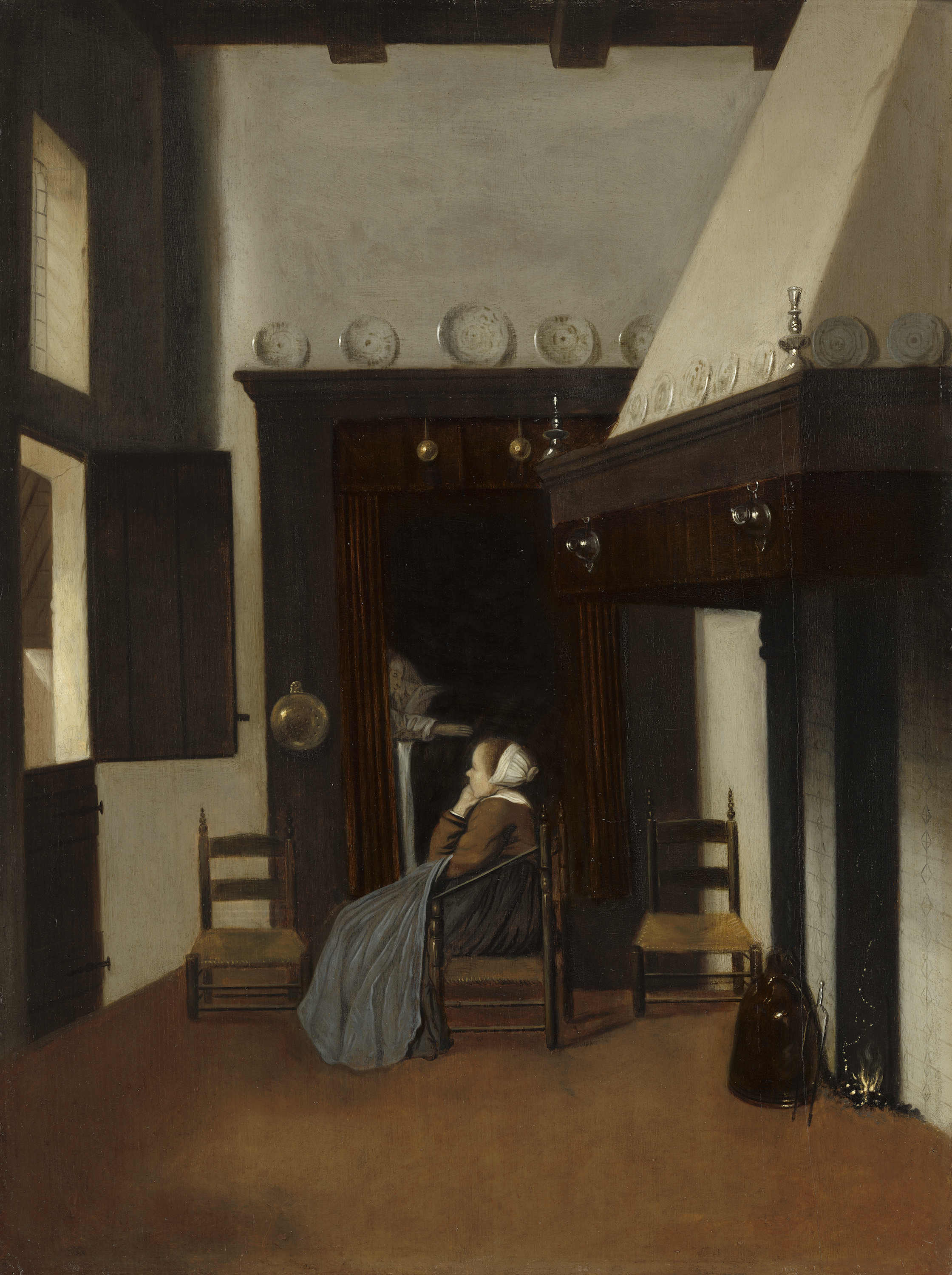The towering pitched-roof brick houses with narrow windows, packed tightly along a narrow lane with a bakery and barber’s shop (indicated by a striped post and golden bowls for bloodletting) show Vrel as a pioneer of the new genre of the townscape, which emerged around 1650. His pictures appear peculiar, his figures quirky, and his street scenes stage-like. For a long time, his works were confused with those of Johannes Vermeer. His paintings are represented among the world’s most famous museum collections, and they are coveted rarities among collectors. But to date the painter Jacobus Vrel appears to be a phantom.
The purchase of Vrel’s Street Scene, with the help of the Ernst von Siemens Kunststiftung, represents the Alte Pinakothek’s first acquisition of a major work by this enigmatic painter. This painting is of particular importance within his small oeuvre of mainly cityscapes and interiors. It is one of Vrel’s earliest works and yet also his most complex architectural composition. This seemingly typical example of Dutch Baroque painting differs from all other architectural representations of the time and thus occupies a prominent position within the collection. Vrel was a pioneer in his field, and not an imitator as was long assumed.
Typical of Jacobus Vrel's street scenes are the unusually narrow, steeply rising and closely spaced brick houses with red-brownish brickwork. These buildings have three to five floors and peaked gable roofs covered with Dutch tiles. The façades are articulated by several different architectural elements. The most striking are the narrow, often whitewashed windows.
Do you see the characters on the street? The lady on the left is talking to another woman carrying a shopping basket on her arm in front of the bakery. The three women are easily recognizable by their white bonnets and shawls, while the men are wearing a hat and dark clothes. The man on the right leans on a long stick as he talks. In the foreground the figures are larger, towards the back they become smaller and smaller—in this way the painter creates a depth in the room.
This painting is now on view in the Jacobus Vrel: Looking for Clues of an enigmatic Painter exhibition until February 27th, 2022, in the Alte Pinakothek in Munich.
P.S. Are you as curious about Jacobus Vrel as we are? Here you can read about this mysterious painter!
P.P.S. As December is in a full swing now, please check our DailyArt 2022 Paper Calendars here. :)


 Jacobus Vrel
Jacobus Vrel